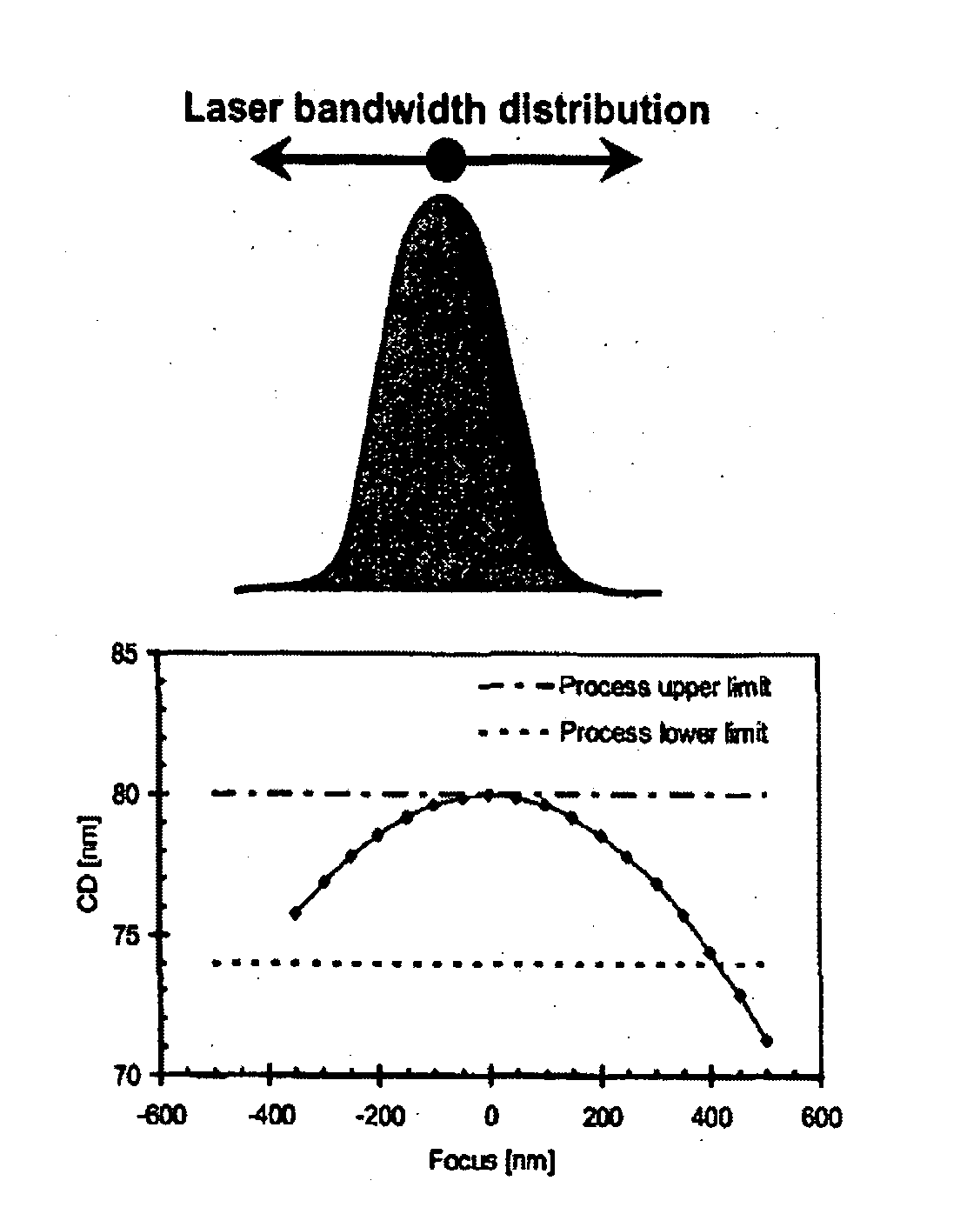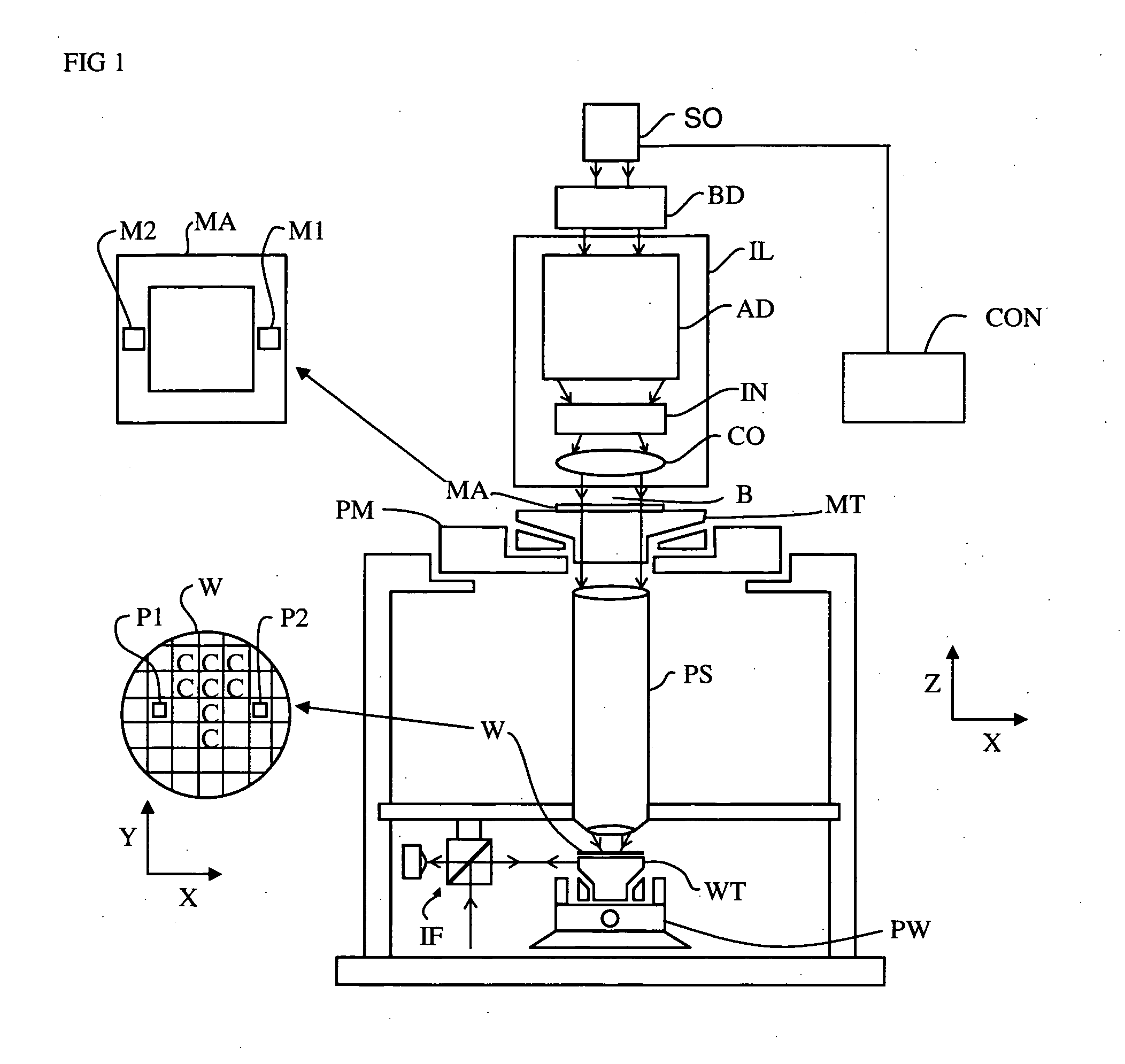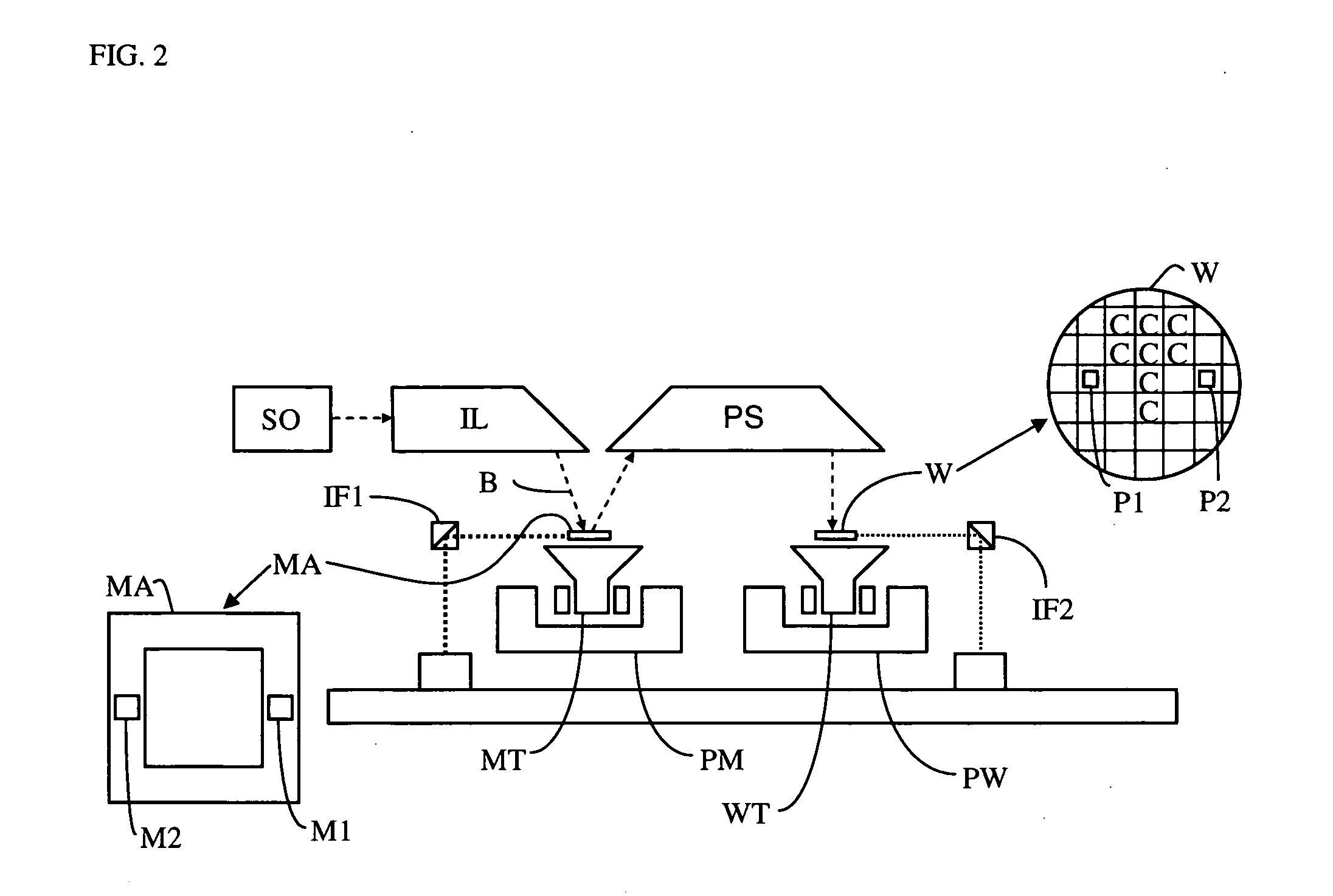Lithographic apparatus, excimer laser and device manufacturing method
a technology of excimer laser and lithographic apparatus, which is applied in the direction of optical instruments, photomechanical apparatus, instruments, etc., can solve the problems of limiting process latitude, cd-focus error is a particular problem, and conventional lithographic apparatus do not directly address the problem of cd-focus error, etc., to achieve the effect of enhancing the depth of focus
- Summary
- Abstract
- Description
- Claims
- Application Information
AI Technical Summary
Benefits of technology
Problems solved by technology
Method used
Image
Examples
Embodiment Construction
[0057]FIG. 1 schematically depicts a lithographic apparatus according to a particular embodiment of the invention. The apparatus comprises: [0058] an illumination system (illuminator) IL for providing a projection beam PB of radiation (e.g., UV radiation or EUV radiation). [0059] a first support structure (e.g., a mask table) MT for supporting a patterning device (e.g., a mask) MA and connected to first positioning actuator PM for accurately positioning the patterning device with respect to item PL; [0060] a substrate table (e.g., a wafer table) WT for holding a substrate (e.g., a resist-coated wafer) W and connected to second positioning actuator PW for accurately positioning the substrate with respect to item PL; and [0061] a projection system (e.g., a refractive projection lens) PL for imaging a pattern imparted to the projection beam PB by patterning device MA onto a target portion C (e.g., comprising one or more dies) of the substrate W.
[0062] As here depicted, the apparatus i...
PUM
 Login to View More
Login to View More Abstract
Description
Claims
Application Information
 Login to View More
Login to View More - R&D
- Intellectual Property
- Life Sciences
- Materials
- Tech Scout
- Unparalleled Data Quality
- Higher Quality Content
- 60% Fewer Hallucinations
Browse by: Latest US Patents, China's latest patents, Technical Efficacy Thesaurus, Application Domain, Technology Topic, Popular Technical Reports.
© 2025 PatSnap. All rights reserved.Legal|Privacy policy|Modern Slavery Act Transparency Statement|Sitemap|About US| Contact US: help@patsnap.com



